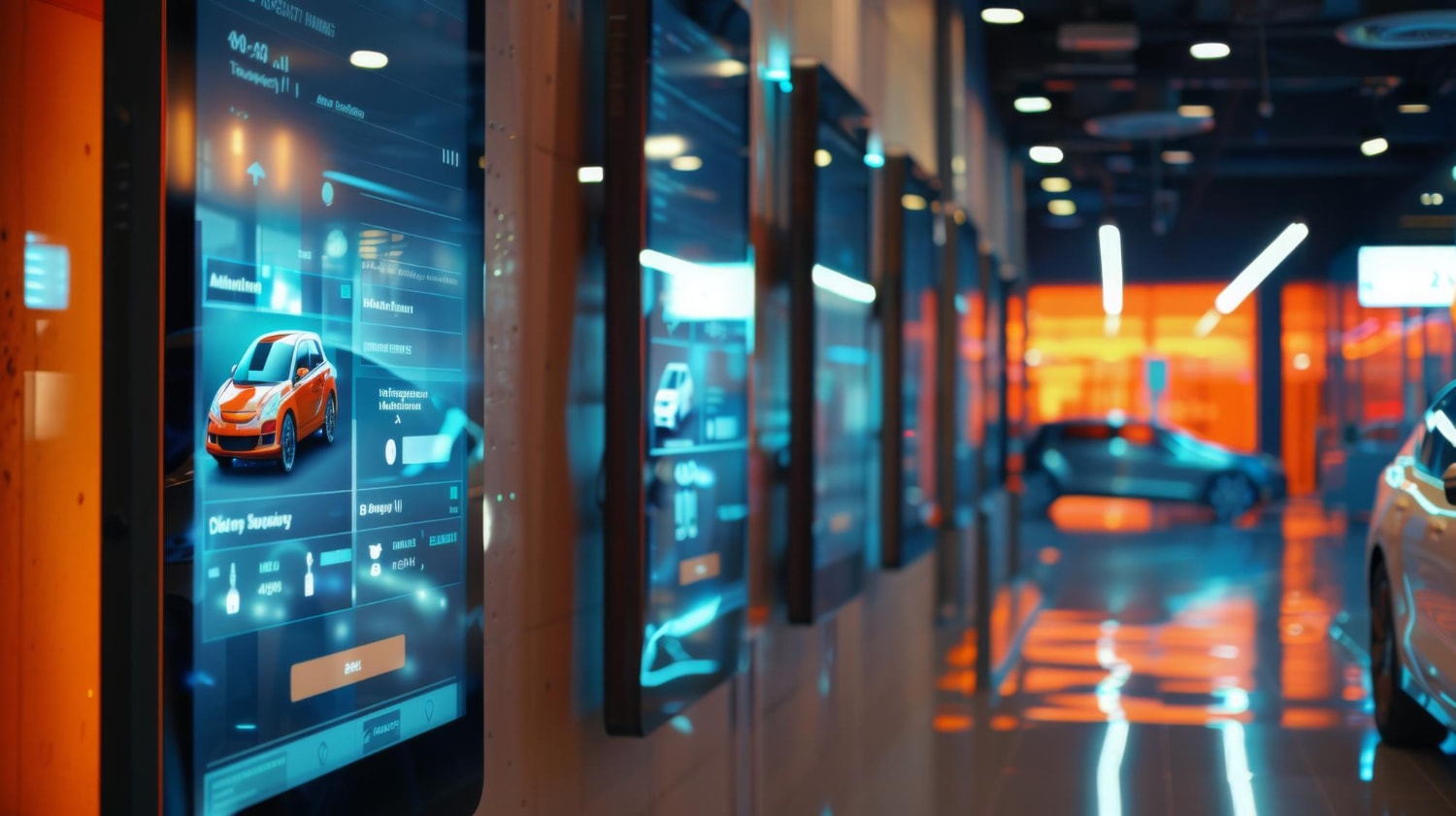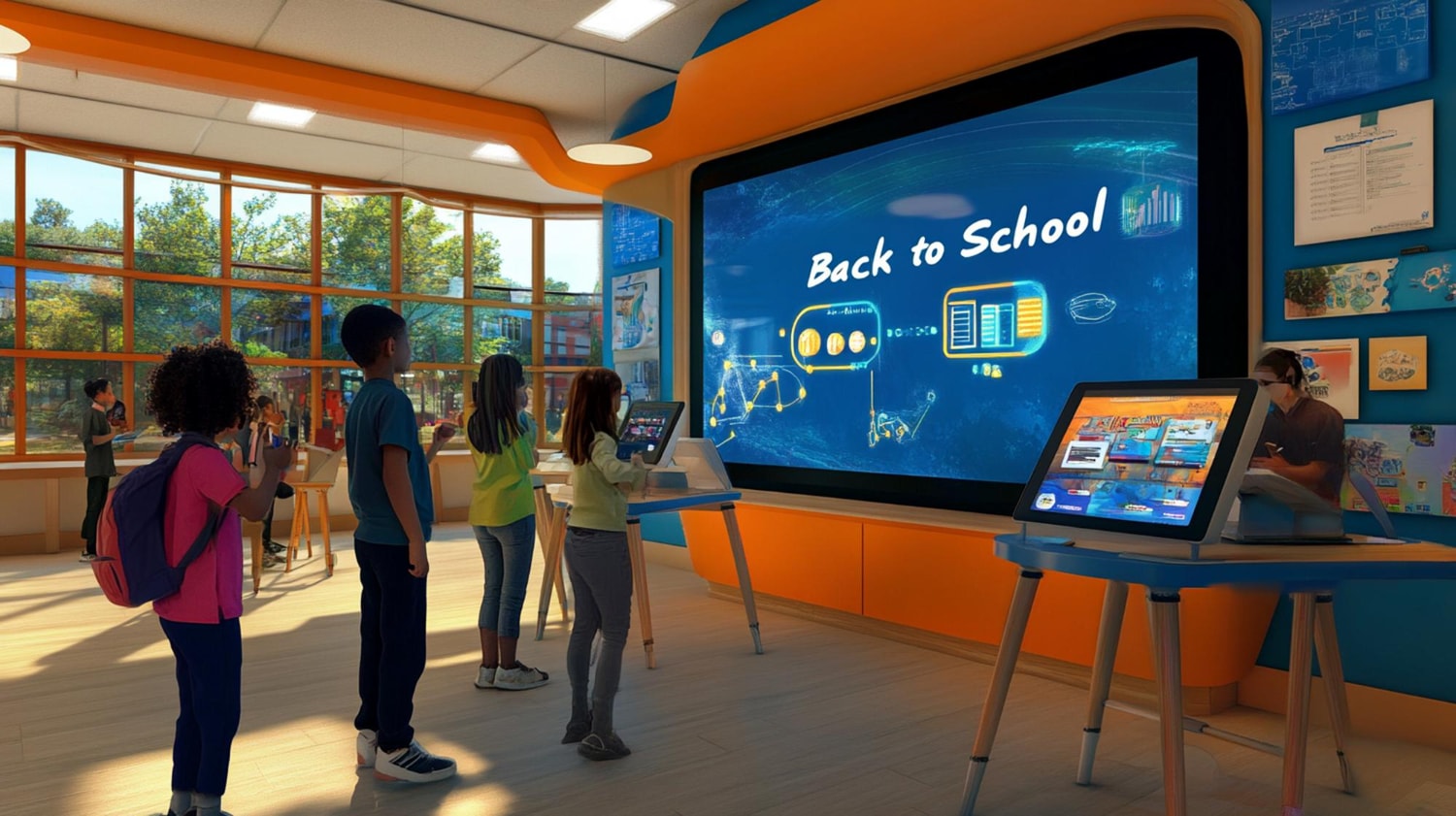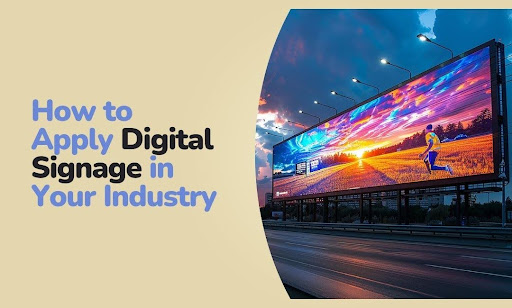Digital signage has evolved far beyond flashing ads on a screen. It’s reshaping how businesses operate across all sectors. The right setup can drive engagement, boost productivity, and deliver results that directly impact your bottom line. But here’s a question—are you fully tapping into its potential, or is it just another piece of tech in the background?
Whether you’re in manufacturing, retail, or healthcare, digital signage could be the tool you’re missing to make a bigger impact. In this article, we’re going to tackle how different industries can apply this dynamic technology for real-world results. From simplifying internal communications to creating more interactive customer experiences, digital signage offers scalable solutions for industries at every level—primary, secondary, tertiary, and quaternary.
In this article, we’ll cover:
- Primary industries: Using digital signage to streamline operations in agriculture, mining, and energy sectors.
- Heavy and light secondary industries: Improving manufacturing workflows and factory communication with digital signage.
- Tertiary industries: Enhancing customer experiences in retail, hospitality, and healthcare with real-time updates and interactive displays.
- Quaternary industries: Leveraging digital signage for knowledge sharing and data visualization in tech, education, and research.
By the end of this guide, you’ll know how to apply digital signage strategically in your industry for maximum impact—whether you’re optimizing workflows, keeping customers engaged, or making data more accessible to your team.
Applying Digital Signage in Primary Industries
Digital signage isn’t just a tool for customer-facing industries—it’s a game-changer for operational efficiency in agriculture, mining, and energy sectors. Here’s how you can apply it effectively within each of these primary industries.
Agriculture
To use digital signage in agriculture, start by integrating it into your existing farm management systems. Place digital displays in key areas like crop fields, storage barns, and control centers to ensure constant communication with workers. These screens can provide up-to-date information on weather conditions, machinery maintenance schedules, and irrigation needs.
Steps for implementation
- Install weather and IoT sensors: Connect these sensors to your digital signage system to display real-time field data (e.g., soil moisture, and temperature) for decision-making.
- Use mobile displays for remote areas: Portable digital signage can be used in the field, offering crop health updates and pest control alerts directly where your workers are.
- Automate updates: Configure your system to push updates based on triggers, like significant changes in weather or crop conditions so that the information is always timely.
Mining
In mining, digital signage is an essential tool for ensuring safety and operational efficiency. Use displays to communicate critical safety information, broadcast emergency alerts, and display real-time updates on environmental conditions.
Steps for implementation
- Mount screens at key access points: Set up digital signage at entry and exit points of mines to display safety protocols, shift changes, or air quality levels.
- Integrate with underground communication systems: Use signage as part of a wider system to relay alerts or operational messages in real time, especially in high-risk areas.
- Digital maps and task assignments: Display underground mining maps, equipment availability, and task assignments so workers can stay informed without relying on manual briefings.
Energy
Energy companies often have teams spread out across vast areas, from power plants to wind farms. Digital signage helps centralize corporate communications by displaying critical information on production levels, safety updates, and equipment status.
Steps for Implementation
- Deploy signage in control rooms: Large displays can visualize energy output, equipment health, and resource usage in real time, allowing engineers to monitor operations efficiently. By integrating with a content management system, you can ensure seamless control and updates across multiple locations.
- Field communication: Install mobile or fixed displays at power stations and refineries to communicate operational instructions, safety alerts, or maintenance schedules to on-site teams. These displays can also stream social media feeds related to industry news, fostering awareness and engagement among the workforce.
- Automate maintenance alerts: Link your digital signage to monitoring systems that track equipment health, and automatically display alerts when action is required.
By focusing on these actionable steps, digital signage becomes a powerful tool for increasing efficiency, improving communication, and ensuring safety in primary industries. The key is to strategically place these systems where they add the most value and automate updates to keep everyone informed.
Applying Digital Signage in Heavy and Light Secondary Industries

In both heavy and light manufacturing, operational efficiency and clear communication are non-negotiable. Leveraging B2B eCommerce for manufacturers helps achieve these goals by creating a seamless and transparent exchange of information. Digital signage offers a sophisticated solution to these challenges, providing real-time updates, improving workflows, and enhancing communication within factories. Here’s how you can apply digital signage strategically to optimize manufacturing processes in secondary industries.
Heavy Industry
Heavy industry operations, such as automotive, steel, and machinery manufacturing, often face complexities that require constant monitoring. Digital signage can centralize communication, reduce downtime, and keep the entire workforce aligned.
Steps for Implementation
- Integrate digital signage with production systems: Connect your digital signage to existing manufacturing execution systems (MES). This allows real-time display of key performance indicators (KPIs) like production output, machine efficiency, and error rates directly on the factory floor.
- Install large-format screens on production lines: Place digital displays at each critical point of the production line to provide workers with instant access to relevant data. These screens can show equipment status, maintenance schedules, and task instructions, reducing the need for manual check-ins or paper-based systems.
- Use signage for safety and compliance updates: Heavy industries require rigorous adherence to safety protocols. Strategically position digital signage at entry points, assembly lines, and high-risk areas to broadcast safety updates, compliance checks, and emergency alerts. This helps to prevent accidents and ensures safety measures are consistently followed.
Light Industry
In light industries, such as food processing, textiles, or electronics, flexibility and quick adaptability are key to staying competitive. Digital signage can help streamline factory communication and reduce downtime by delivering the right information at the right time.
Steps for Implementation
- Set up networked signage for inter-departmental communication: Link multiple digital displays throughout different departments, from production to quality control to packaging. This setup ensures seamless communication across teams, minimizing delays or miscommunications that often lead to costly downtime.
- Deploy digital task boards and status updates: In smaller-scale production environments, digital signage can replace traditional whiteboards or bulletin boards to display real-time task assignments, project deadlines, and machine availability. Workers can receive instant updates on production targets, quality checks, or material shortages.
- Incorporate signage into maintenance systems: Connect your digital signage to computerized maintenance management systems (CMMS) to display upcoming machine maintenance tasks. Automated alerts for scheduled maintenance can help prevent machine failure and minimize unexpected downtime, keeping production lines running smoothly.
Centralizing Data for Decision-Makers
One of the critical applications of digital signage in both heavy and light industries is its ability to centralize vast amounts of data and make it accessible to decision-makers in real time. Factory managers can monitor operational performance, identify bottlenecks, and make informed decisions faster.
Steps for Implementation
- Install digital dashboards in control rooms: These centralized dashboards can display production statistics, operational alerts, and supply chain data. Decision-makers can access key insights without needing to leave their desks or interrupt workflow, enabling quicker response times to emerging issues.
- Automate reporting and data visualization: Use digital signage to automate reports on critical metrics such as production rates, inventory levels, and quality control. Visualize this data on large displays for quick interpretation, helping managers take immediate action when necessary.
Applying Digital Signage in Tertiary Industries: Retail, Hospitality, and Healthcare
In tertiary industries, digital signage plays a crucial role in transforming the customer experience. Whether it’s guiding visitors in a hospital, enhancing the ambiance in a hotel, or promoting new products in a retail store, interactive displays and real-time updates can make all the difference. Here’s how digital signage can be applied effectively in retail, hospitality, and healthcare to create engaging, efficient environments.
Retail
Retailers are leveraging digital signage to create immersive shopping experiences that engage customers from the moment they step inside. It goes beyond basic advertisements—digital signage can guide customers, display product availability, and even allow for interactive product exploration.
Steps for Implementation
- Install interactive product displays: Use touchscreen digital signage near product displays that allow customers to explore detailed product information, pricing options, and reviews. This reduces the need for staff assistance and gives customers a more personalized shopping experience.
- Implement real-time inventory updates: Connect digital signage to your inventory management system to display current stock levels, promotions, or new arrivals in specific product categories. This not only helps customers find what they’re looking for but also streamlines the purchasing process.
- Integrate digital wayfinding for larger stores: For larger retail environments, digital wayfinding displays can help guide customers through different sections of the store, providing directions to specific departments, promotional areas, or checkout lines. This reduces confusion, enhancing the overall shopping experience.
Hospitality
In the hospitality industry, creating a seamless guest experience is key to customer satisfaction. Digital signage in hotels and resorts can offer everything from personalized greetings to interactive directories, making the guest’s stay more comfortable and informed.
Steps for Implementation
- Use personalized greetings at check-in: Position digital signage at hotel entrances or reception desks to welcome guests by name or digital display room assignments after they check in. This can be automated by integrating with hotel management systems, giving guests a personalized touch that elevates their experience from the very beginning.
- Interactive displays for local recommendations: Place interactive touchscreens in the lobby that offer real-time local information, such as nearby dining options, tourist attractions, or event schedules. Guests can use these displays to plan their stay, reducing the need for concierge services and enhancing their overall convenience.
- Deploy event scheduling displays: For hotels hosting conferences or events, digital signage can provide real-time updates on event schedules, meeting room availability, and directional guidance. This improves event flow and ensures attendees have the information they need at their fingertips.
Healthcare
In the healthcare sector, clear communication is crucial for patient satisfaction and operational efficiency. Digital signage offers healthcare providers a reliable way to keep patients informed and reduce anxiety through real-time updates, wayfinding, and health education.
Steps for Implementation
- Display real-time waiting room updates: Install digital signage in waiting areas to keep patients informed about their place in the queue, expected wait times, and any appointment delays. This helps reduce anxiety and keeps patients engaged during the waiting process.
- Use signage for hospital wayfinding: Large hospitals can be difficult to navigate. Place digital wayfinding displays at main entrances and throughout the facility to guide patients to different departments, doctor’s offices, or laboratories. These signs can be integrated with hospital information systems for automated updates.
- Provide health education content: Use waiting room screens to display health education content tailored to your patients. Whether it’s information on preventive care, treatment options, or wellness tips, this keeps patients engaged and informed while they wait for appointments.
Each step of implementation ensures that these displays aren’t just for show—they serve a functional purpose that improves both customer satisfaction and operational efficiency.
Applying Digital Signage in Quaternary Industries

Quaternary industries, such as tech, education, and research, rely heavily on the efficient dissemination of information. Digital signage provides an advanced solution for displaying complex data and facilitating knowledge sharing. Whether it’s visualizing data sets, providing real-time updates in educational settings, or enhancing collaboration in research facilities, digital signage can significantly streamline how information is communicated across these fields.
Tech
In tech environments, keeping development teams aligned requires quick access to constantly changing data. Digital signage helps visualize key metrics, development timelines, and project progress across teams, enabling faster decision-making and improved collaboration.
Steps for Implementation
- Set up digital dashboards for real-time data monitoring: Use digital signage to create dashboards that pull in data from multiple sources such as development platforms, project management tools, or system monitoring software. These dashboards can be displayed in workspaces or control rooms, showing key metrics like system uptime, code deployment status, or bug reports, giving teams immediate insights into project health.
- Deploy signage in common areas for team-wide communication: In tech companies, placing digital displays in common areas like break rooms, entryways, or shared workspaces can keep teams updated on company announcements, team achievements, or upcoming deadlines. This reduces reliance on email communication and ensures that critical information is seen by all employees.
- Integrate signage with collaborative tools: By integrating digital signage with collaborative tools like Slack or Jira, tech teams can automate task updates or milestone achievements to be displayed in real-time. This enhances transparency and accountability while reducing manual status updates.
Education
Digital signage in educational institutions can transform the way both students and educators interact with information. From lecture halls to campus-wide announcements, digital displays serve as a dynamic tool for sharing educational content and communicating with students.
Steps for Implementation
- Install digital boards in classrooms for interactive learning: Replace traditional whiteboards with interactive digital displays in classrooms. These can be integrated with educational software, allowing instructors to display live data, educational videos, or collaborative projects during lessons. This encourages student engagement and enhances the learning experience.
- Use digital signage for campus-wide updates: Deploy signage throughout the campus to display important notifications, upcoming events, or emergency alerts. Real-time updates can be integrated with the school’s internal systems, ensuring that students and staff are immediately informed about class cancellations, schedule changes, or emergency situations.
- Display student and faculty achievements: Highlight notable student or faculty achievements using digital signage around the campus. This can foster a sense of community and encourage further academic excellence by showcasing research contributions, awards, or publications.
Research
In research institutions, where collaboration is key to innovation, digital signage ideas can aid in visualizing complex data sets and improve corporate communication across research teams. From labs to conference rooms, signage allows researchers to present findings, track experiments, and share results more effectively, fostering employee engagement in scientific progress.
Steps for Implementation
- Create digital data walls for research projects: Use large-scale digital signage to display data visualizations, research progress, and experimental results. These digital walls can be placed in labs or research centers to allow teams to monitor real-time data or compare historical trends during critical research phases. Integrating interactive maps on these displays can also help navigate large research facilities more efficiently.
- Set up conference room displays for research presentations: Equip conference rooms with digital displays that researchers can use to present findings, display models, or share visual data. These displays can be linked to collaborative tools to enable real-time adjustments and interactive discussions during research meetings, offering various digital signage options based on room size and presentation needs.
- Automate data sharing and updates: Connect your digital signage to internal research systems or databases, automating updates on ongoing experiments, funding milestones, or upcoming research events. This ensures that all team members stay informed without manual updates or delays and provides opportunities to create engaging content for both researchers and visitors.
Digital signage has become a powerful tool for quaternary industries like tech, education, and research. By focusing on knowledge sharing and data visualization, these sectors can streamline communication, increase collaboration, and create more engaging environments for both learning and innovation. Each step of implementation helps deliver precise, relevant information when and where it’s needed most.
Wrapping Up: Elevate Your Industry with Digital Signage
Applying digital signage in your industry doesn’t have to be complicated. With the right approach, you can transform how you communicate, streamline operations, and improve customer experiences across various sectors. By following practical steps, digital signage can serve as a vital tool in primary, secondary, tertiary, and quaternary industries. From agriculture and mining to healthcare, retail, and tech, it’s clear that this technology holds massive potential to boost efficiency and engagement.
Here’s a quick recap of what we’ve covered:
- Primary industries: Streamline operations in agriculture, mining, and energy with real-time data and automated workflows.
- Secondary industries: Optimize manufacturing workflows and safety protocols by integrating digital signage into production lines and maintenance systems.
- Tertiary industries: Enhance customer interactions and reduce wait times in retail, hospitality, and healthcare with interactive displays and up-to-date information.
- Quaternary industries: Boost knowledge sharing and data visualization in tech, education, and research environments by leveraging interactive digital signage for real-time collaboration.
Each industry has unique needs, but the one thing that remains constant is the ability of digital signage to drive results when applied effectively. Now it’s your turn to explore how this tool can make an impact in your specific field, bringing both your operations and customer experiences to the next level.
CrownTV offers a smooth and sophisticated solution for businesses looking to implement digital signage across various industries. Whether it’s enhancing customer experiences in retail, streamlining internal communication in healthcare, or visualizing data in tech and research, CrownTV delivers a comprehensive service that fits seamlessly into any environment. With our cloud-based digital signage software known as Dashboard, you can manage your digital signage displays effortlessly, ensuring real-time updates and secure remote control no matter how many digital screens you need to handle.
What sets CrownTV apart is our commitment to providing digital signage implementation services—from expert installation to digital signage content creation and ongoing support. We handle everything so you can focus on your core business. We offer a range of high-brightness indoor and window displays, tailored to your industry’s unique needs, and our exclusive media player provides consistent, high-performance operation in any setting.Additionally, our customizable apps and integrations ensure that your signage system works hand-in-hand with your existing tools, whether you’re in retail, education, or another sector. With competitive pricing and solutions designed for scalability, CrownTV is equipped to help businesses of all sizes enhance engagement, streamline operations, and deliver impactful messaging through the digital signage solution.

